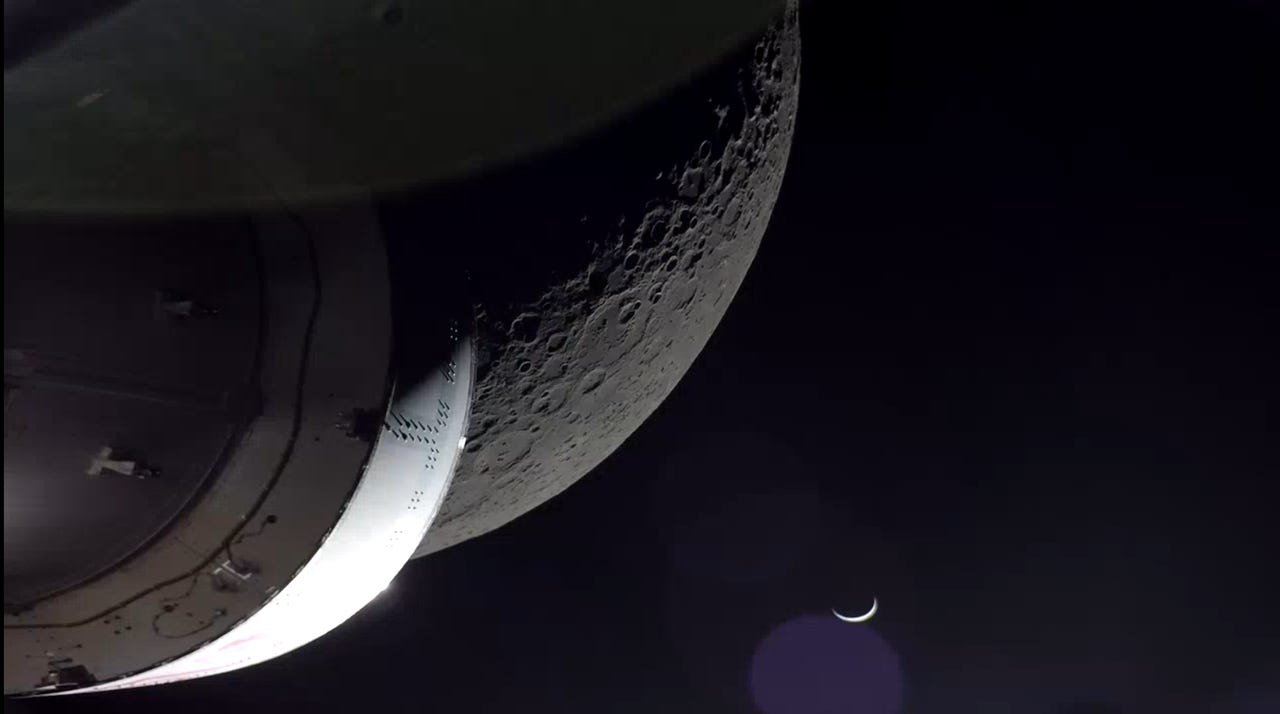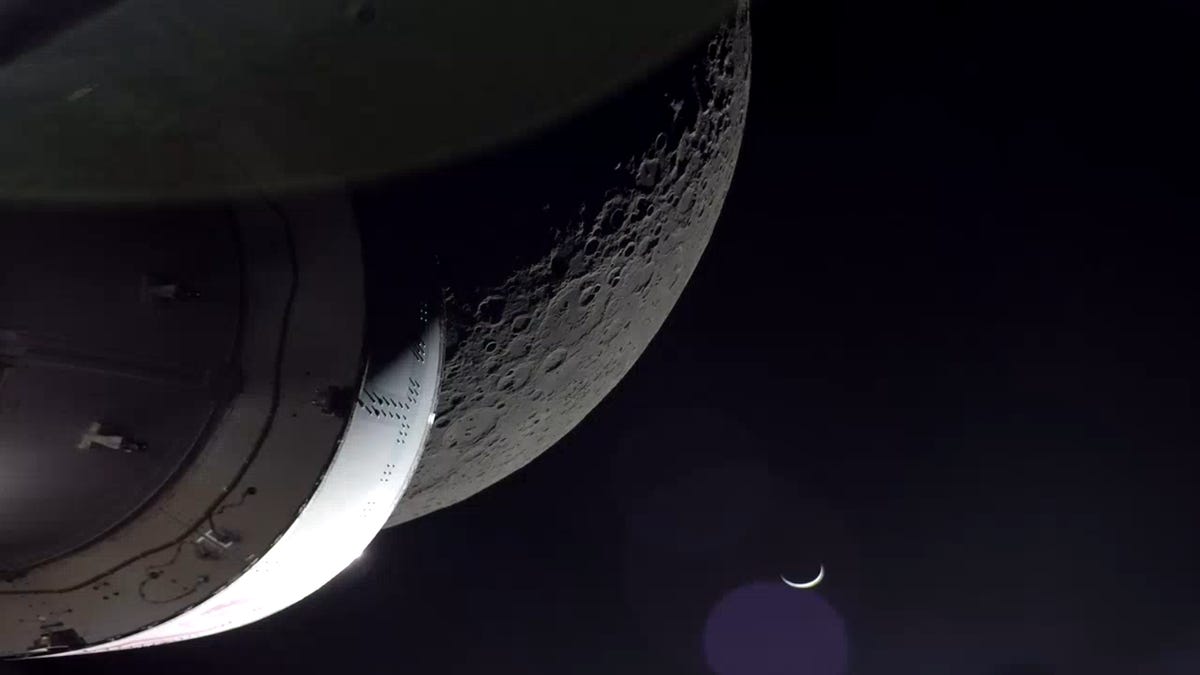Artemis 1 mission: After slingshot lunar flyby, NASA’s Orion is headed back to Earth

Orion has completed its flyby burn, committing the spacecraft to a December 11 splashdown in the Pacific Ocean. Image: NASA
On its 19th dayin space, NASA’s Artemis I Orion spacecraft completed its final pass of the moon at 80.6 miles from the lunar surface en route back to Earth for a splashdown in the Pacific Ocean, due in a few days’ time.
Almost everything went to plan on Monday as mission control in Houston set the stage for Orion’s return, powered by a lunar flyby burn, where it flew close enough to the Moon to use its gravity to “slingshot” back to Earth. Splashdown is scheduled to occur on Sunday 11 December.
The powered flyby burn is Orion’s last major engine maneuver on this mission and used ESA’s service module for a burn that lasted 3 minutes and 27 seconds to change its velocity by about 655mph (961 feet per second).
As of 5.29 pm CST on December 5, Orion was traveling 244,629 miles from Earth and 16,581 miles from the Moon, cruising at 668 mph.
Also: What is Artemis? Everything you need to know about NASA’s new moon mission
Orion will enter Earth’s atmosphere traveling at 2,500 mph and then slow to 300mph before its parachutes open and slows its speed to about 20 mph before splashdown on Sunday.
“Orion is heading home!” said NASA administrator Bill Nelson in a Monday evening update.
“When Orion re-enters Earth’s atmosphere in just a few days, it will come back hotter and faster than ever before – the ultimate test before we put astronauts on board.”
The landing and recovery teams are headed up by a joint US Navy and NASA team and will now depart on a ship from Naval Base San Diego. NASA on Monday decided they will depart on December 7, according to Nelson.
The Pentagon’s contribution to the recovery teams include US Navy amphibious specialists and Air Force weather specialists, and engineers and technicians from Kennedy, Johnson Space Center in Houston, and Lockheed Martin Space Operations.
Divers and engineers, deployed off the ship on smaller boats, will meet Orion and attach a “winch line” to Orion to pull it on the ship to a cradle on the ship’s well-deck where it will be secured. They’ll also aim to collect the three main parachutes Orion’s forward bay cover before it’s all returned to the US Naval Base San Diego for hardware inspection and data collection.
Also: Artemis mission: No astronauts on the Orion spaceship, but some unusual passengers
Beyond several false starts for the Artemis I Space Launch System launch, almost everything since has gone to plan, with the exception of an unplanned communications outage lasting 47 minutes on November 23.
Nelson on Monday detailed another unplanned four-hour communications outage on Saturday, this time due to equipment failure at the Deep Space Network (DSN) Goldstone ground station complex in the Mojave Desert, California. NASA’s two other DSN complexes on Earth are in Madrid, Spain and Canberra, Australia.
“It was a site-wide outage at Goldstone due to some of the hardware that’s used to process the site and antenna angles. That was recovered last night, but on Saturday we did have a four and half hour comm outage,” said Nelson.
“Originally when we learned abut the Goldstone outage, we thought it might have been up to an eight hour outage and might have been more than one day. But because of our friends in other Mars programs, in Perseverance and the Trace Gas Orbiter loaning some of their Deep Space Network time, and also through the ops team and the Deep Space Network team working to mitigate the site outage, we only saw a four and half hour outage on Saturday.”
NASA determined the cause of the outage during testing of the power system while investigating a reoccurrence of an issue on the “latching current limiter”, which protects power systems for satellites. Shortly after the test configuration, it noticed that four of the feeder current limiters had tripped off and dropped dropped some of the downstream equipment.





Pingback: ข่าวกีฬา